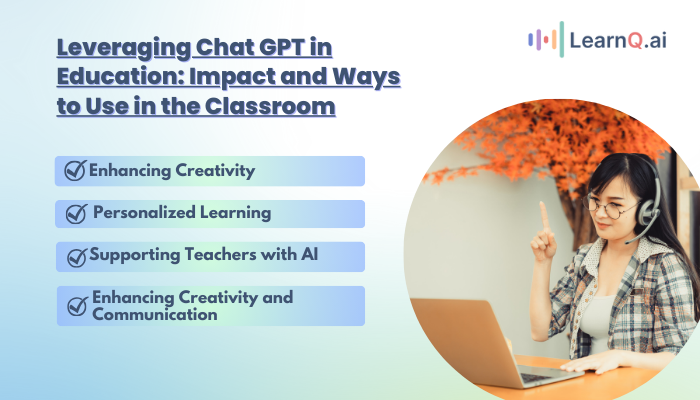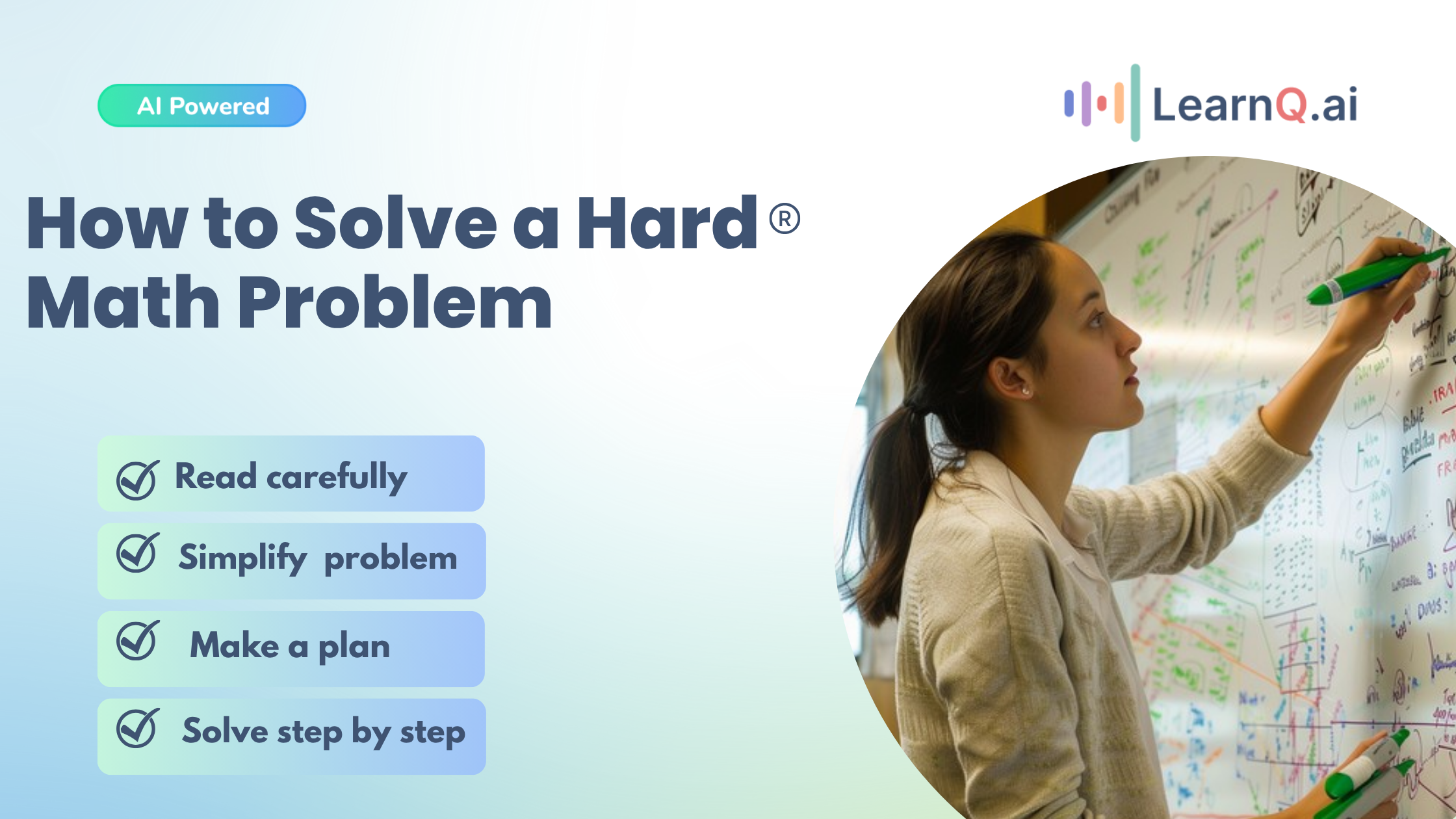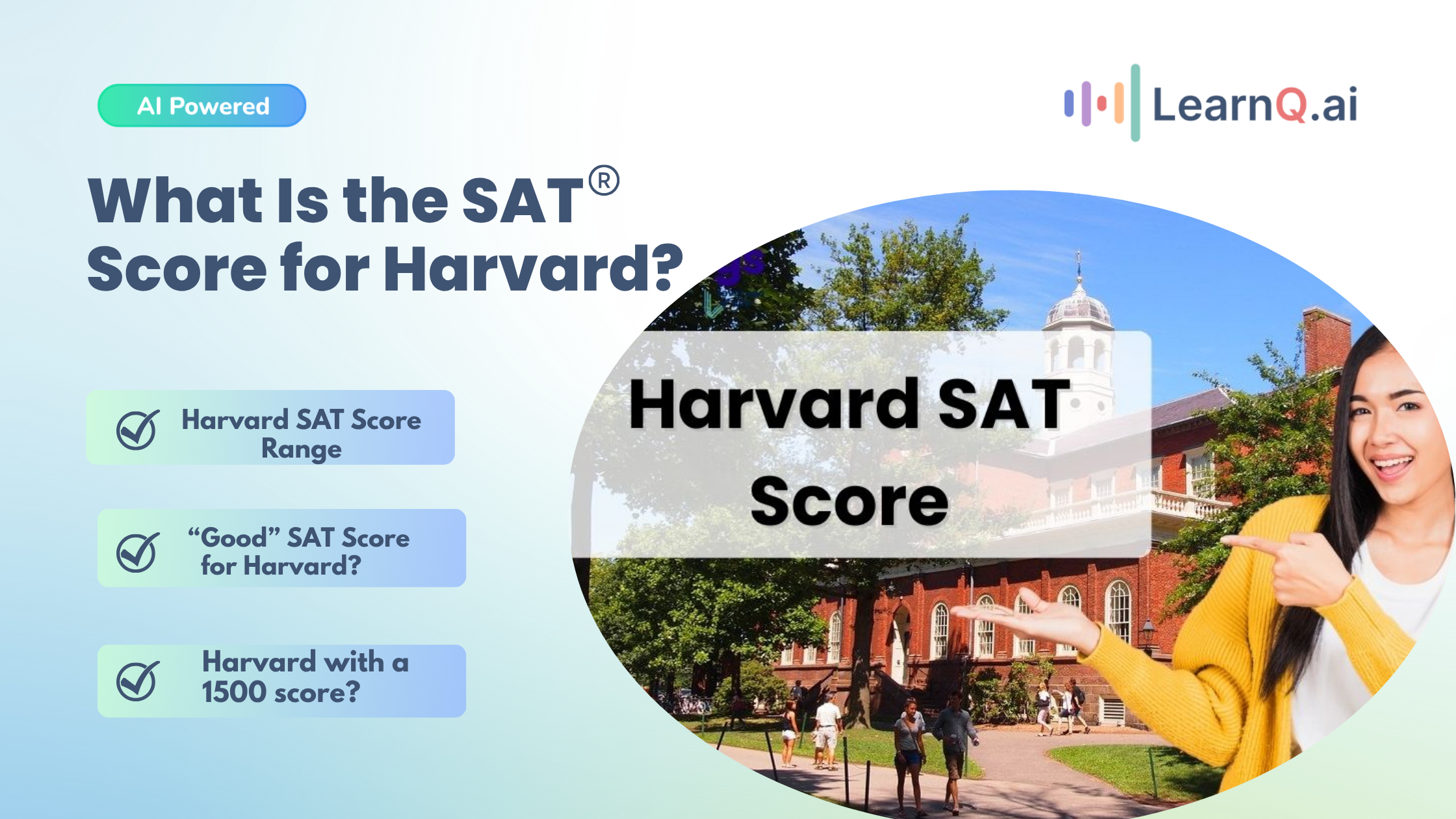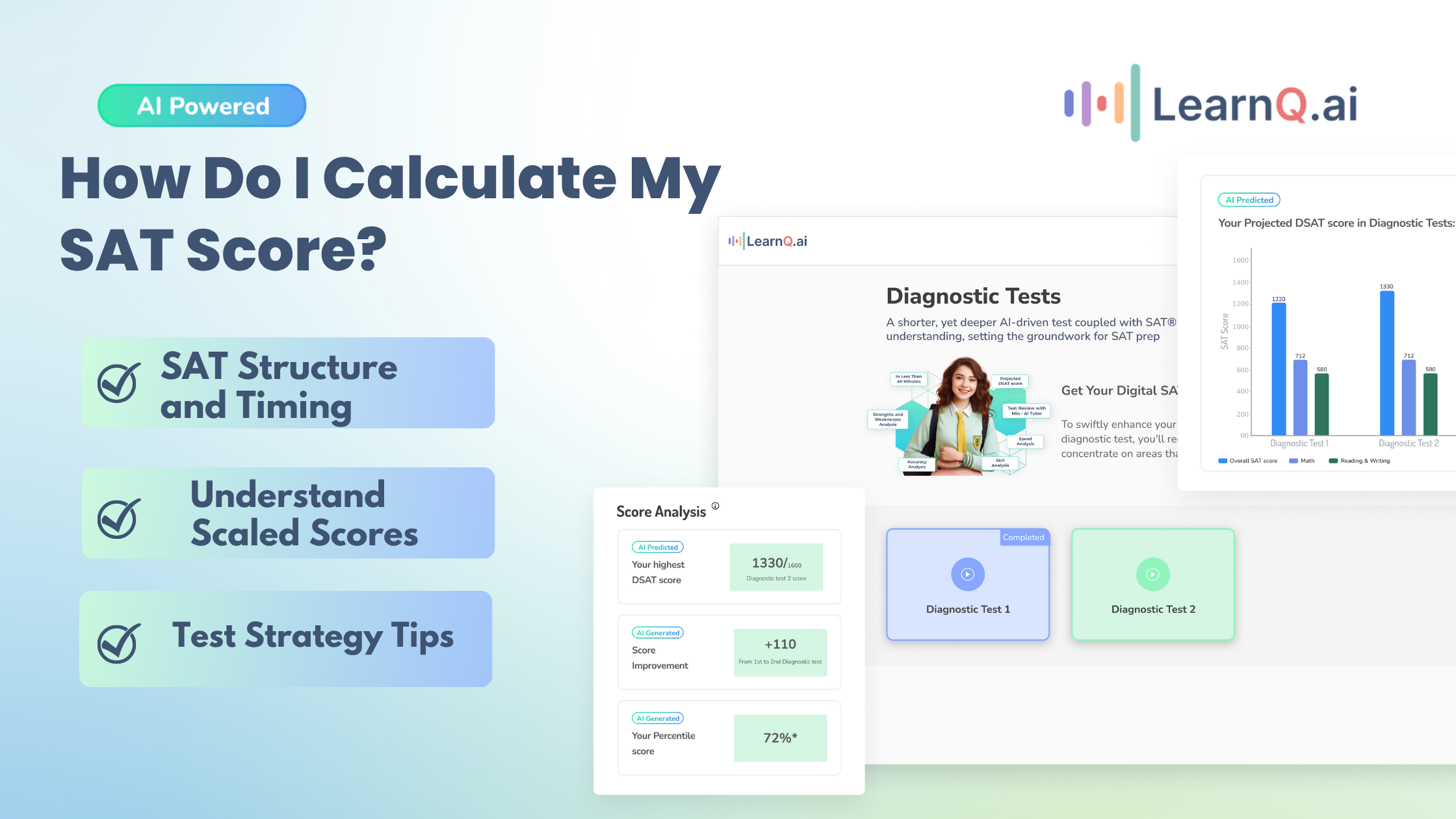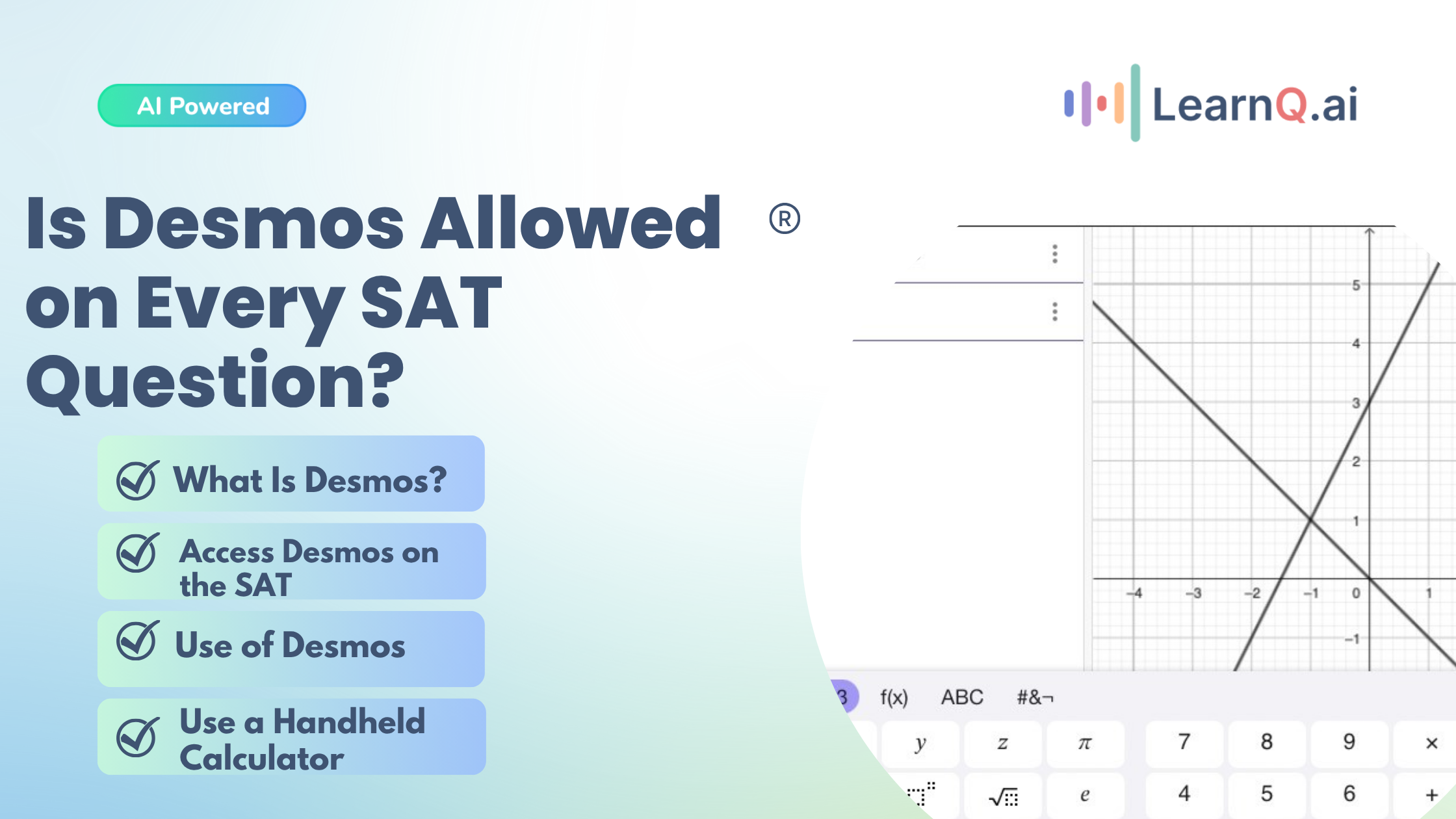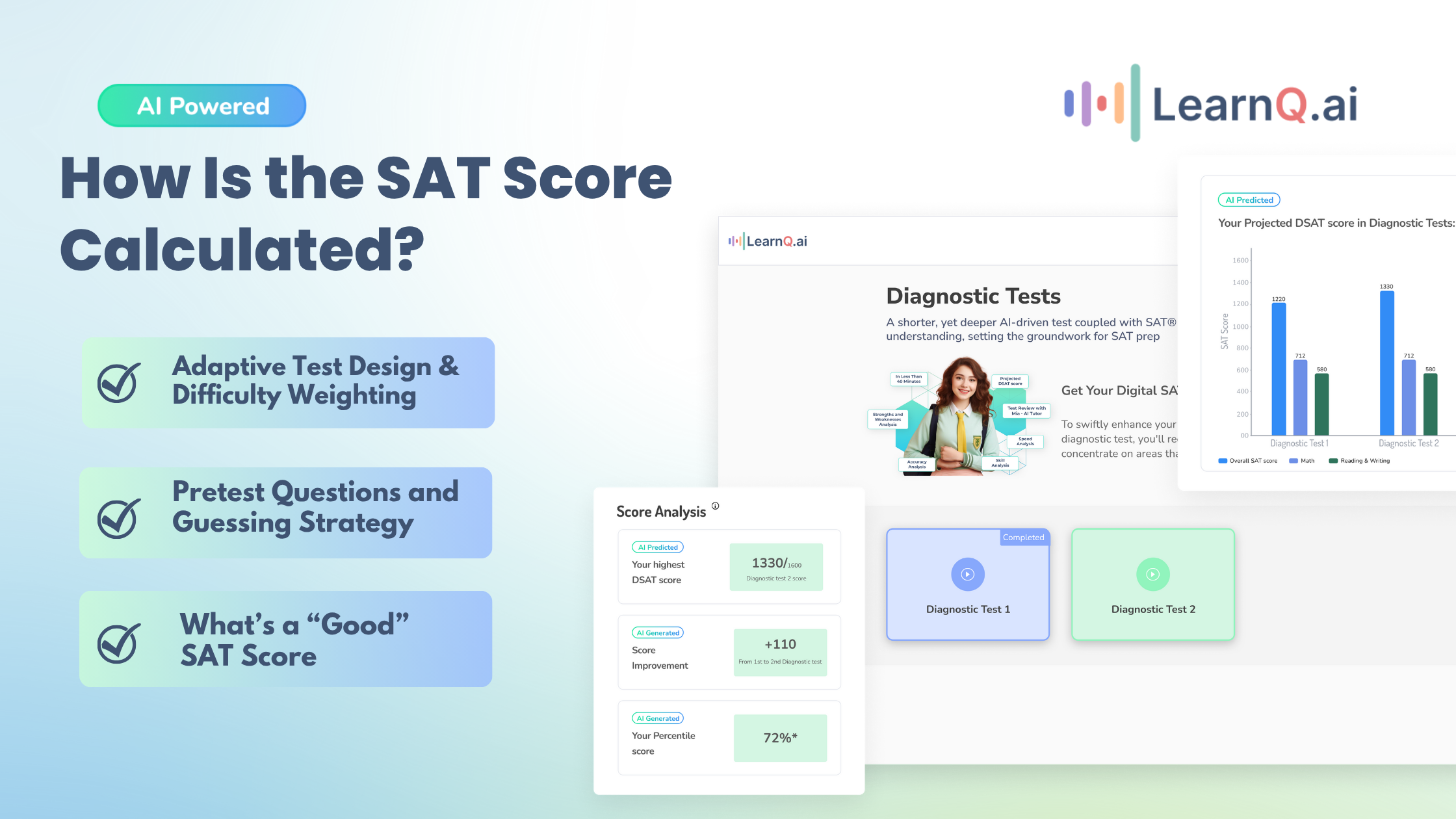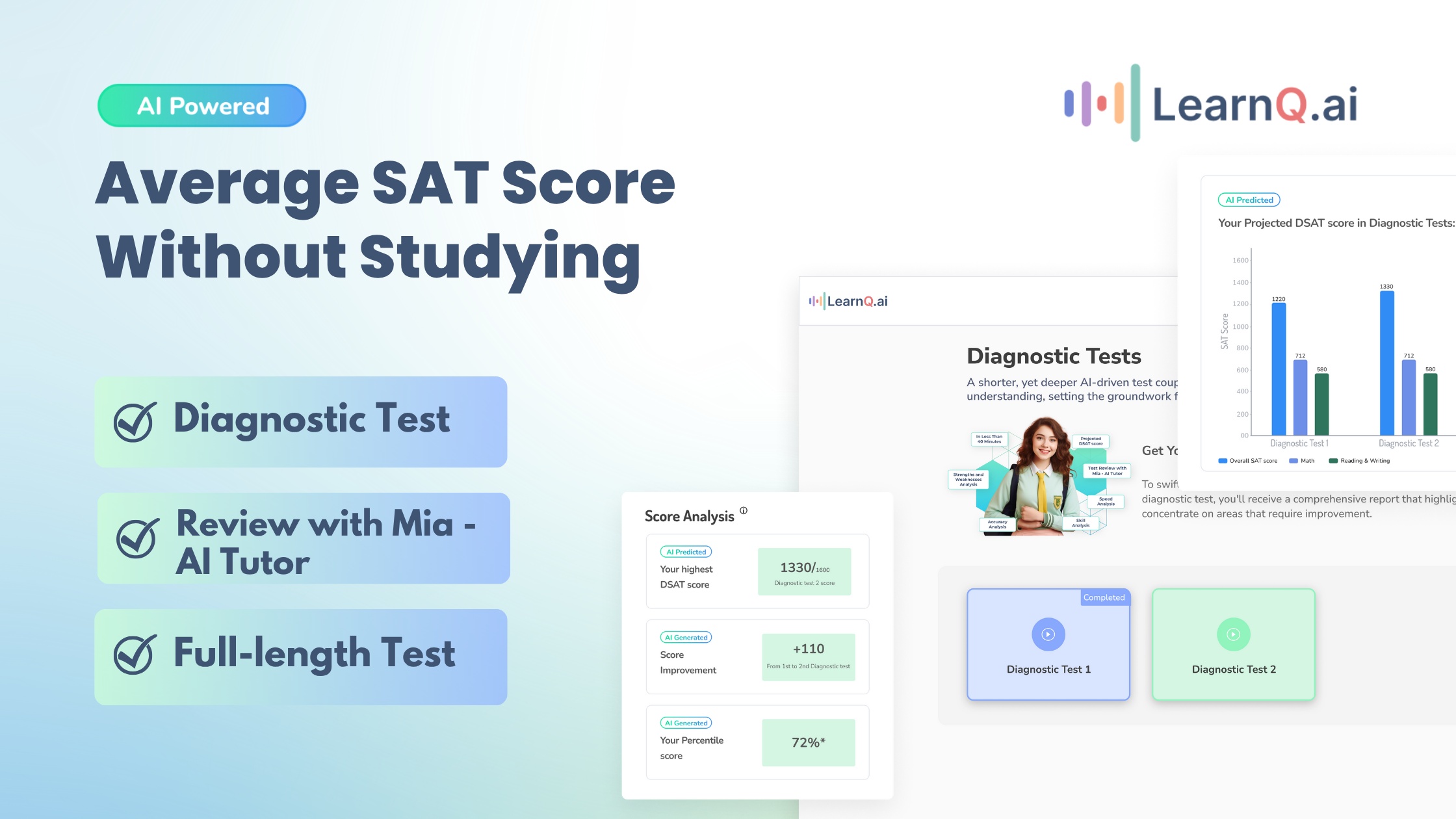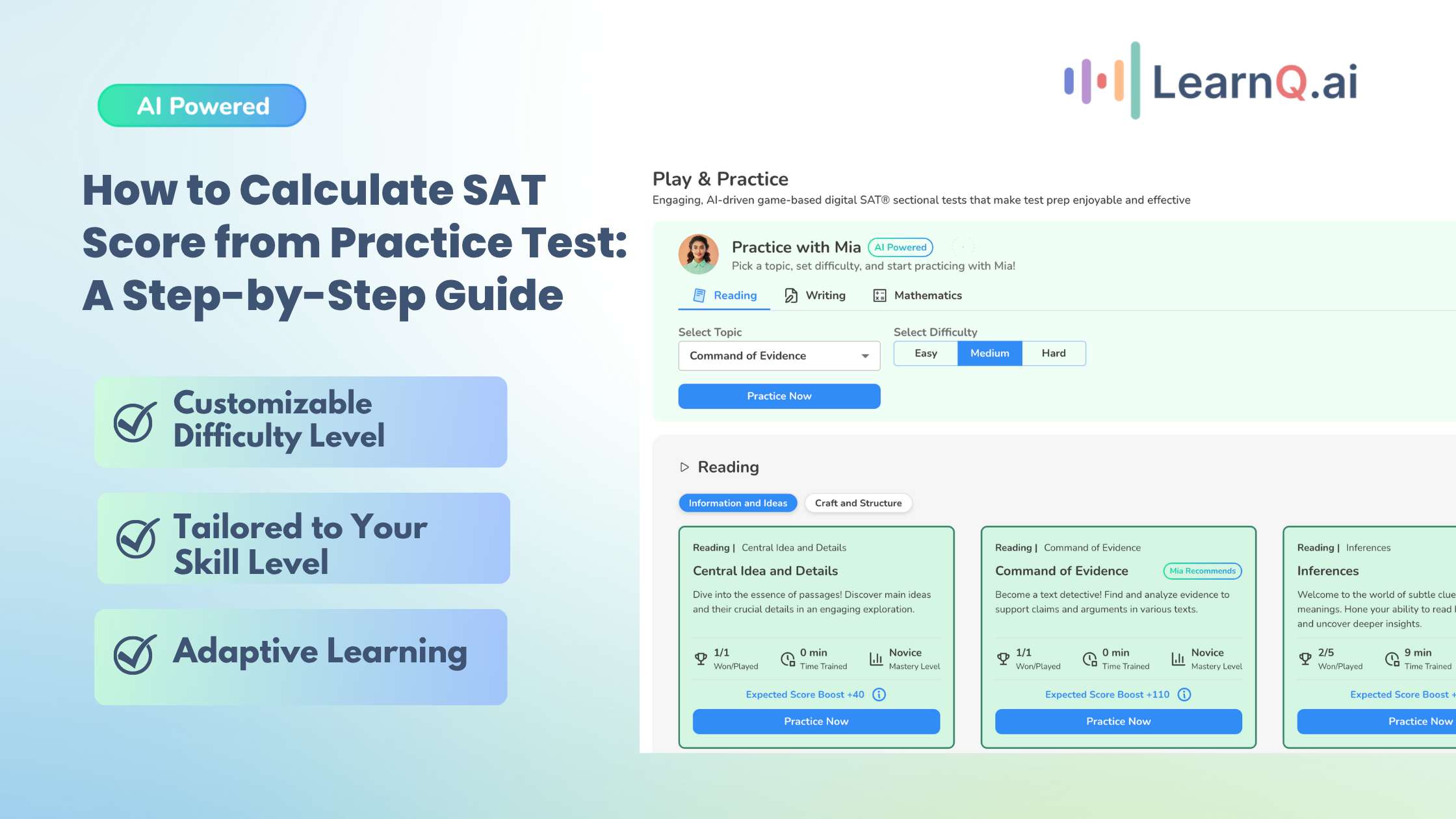In February 2024, a survey by Intelligent.com revealed that 37% of college students already use ChatGPT. If you’re an educator, you might wonder how this tool is making its way into classrooms and whether it can offer real value to teaching.
The rise of AI in education is no longer just a trend. It’s rapidly becoming a game-changer. From boosting student engagement to offering personalized support, ChatGPT in the classroom holds the potential to transform how we approach learning.
In this blog, you’ll explore ChatGPT’s impact on education, how students currently use it, and practical ways to incorporate it into your teaching strategies.
LearnQ.ai is Powered by VEGA AI—Is your Institute Next?
Give students a Duolingo-style test-prep platform with Shopify-level customization for tutors and institutes.
Understanding ChatGPT
To understand how ChatGPT in the classroom can enhance education, it’s essential first to know what ChatGPT is and why it’s gaining traction in educational settings. Whether you’re an educator exploring new teaching methods or a student curious about AI’s role in learning, ChatGPT is a tool worth understanding. Let’s break it down:
What is ChatGPT?
ChatGPT is a generative artificial intelligence (AI) chatbot developed by OpenAI, officially launched on November 30, 2022. It utilizes the Generative Pre-trained Transformer (GPT) architecture, specifically initially based on the GPT-3.5 model and later updated to GPT-4
In simple terms, ChatGPT is an AI-based chatbot that can generate human-like text based on the prompts or questions it receives. It’s designed to understand and respond to language conversationally, making it easy to use for various applications, including education.
Whether it’s answering questions, assisting with homework, or generating lesson plans, ChatGPT can perform a variety of tasks.
Here is a table summarizing the key features of ChatGPT.
| Feature | Description |
| Text Generation | Generates human-like text responses based on prompts, useful for conversation, content writing, etc. |
| Image Generation | Generates images from text-based descriptions, offering visual creation for various purposes. |
| Code Execution | Executes and provides code results, including Python scripts, enhancing programming assistance. |
| Browser Search | Can search the web to fetch real-time information, improving response accuracy for current events. |
| Content Summarization | Summarizes long articles or documents into concise, digestible versions. |
| Translation | Translates text between multiple languages, supporting global communication. |
| Learning Tool | Provides tutoring assistance, explanations, and problem-solving for educational purposes. |
| Tone & Style Customization | Adjusts the tone and style of writing to fit different contexts and preferences. |
| Personalization | Adapts to user needs by remembering key information and preferences across conversations. |
| Structured Data Support | Helps in creating, reading, and analyzing structured data like tables or spreadsheets. |
Technology Behind ChatGPT
The power of ChatGPT lies in two key areas of technology:
- Machine Learning (ML): ChatGPT learns from large data sets to identify patterns, enabling it to generate coherent and relevant responses.
- Natural Language Processing (NLP): NLP allows the AI to understand, interpret, and respond in natural, human language. It’s what makes ChatGPT capable of holding conversations that feel realistic.
Enhance your Digital SAT study routine with AI-driven insights and personalized practice tests.
Why is ChatGPT popular in Educational Settings?
The growing popularity of ChatGPT in education is due to several factors that make it appealing to both students and teachers:
- Personalized Learning: ChatGPT can provide individual support to students by answering specific questions or explaining difficult concepts in a way tailored to their understanding.
- Efficiency for Teachers: It helps educators save time by automating tasks such as grading, creating lesson plans, and even providing feedback on student assignments.
- Accessibility: Students can use ChatGPT anytime for assistance, making learning more flexible and on-demand.
- Engagement: AI-driven tools like ChatGPT can keep students engaged by offering interactive learning methods that break away from traditional methods.
Here’s a comparison of AI in the classroom and its impact on both educators and students.
| Feature | Impact on Educators | Impact on Students |
| Automated Grading | Saves time on repetitive tasks like grading essays or quizzes | Receives immediate feedback, allowing faster improvement |
| Lesson Planning | Generates lesson ideas, questions, and discussion topics | Gets access to more varied and dynamic learning resources |
| Personalized Tutoring | Assists in providing tailored support to struggling students | Can ask questions and receive answers in real-time |
| Classroom Engagement | Helps create interactive quizzes and discussion points | Encourages active participation through engaging activities |
| Research Assistance | Aids in compiling resources or generating discussion prompts | Provides quick access to additional learning materials |
By understanding the impact of ChatGPT on learning, educators, parents, and students can use this tool to create a more effective and engaging classroom environment.
Also Read: AI Tools Examples Transforming Education.
Impact of ChatGPT on Education
The integration of educational technology like ChatGPT is reshaping the way we teach and learn. A whopping 88% of teachers stated ChatGPT had had a positive impact, while 79% of students said the same.
Whether you’re an educator looking to innovate your teaching approach or a student aiming to enhance your learning journey, understanding the impact of using ChatGPT for teaching is essential.
How ChatGPT Personalizes Learning for Students?
One of the major benefits of AI in education is its ability to offer personalized learning experiences. ChatGPT tailors its responses to the student’s level of understanding, providing additional support where needed.
This feature enables students to access immediate help without waiting for a teacher’s availability, making learning more accessible and efficient.
- Custom Feedback: Students receive real-time, personalized feedback based on their specific responses, helping them improve faster.
- Adaptable Explanations: Whether a student needs a simpler breakdown or a more complex explanation, ChatGPT adjusts to their needs, providing tailored learning support.
For example:
Creating Interactive Lessons
AI-assisted learning tools like ChatGPT make lessons more dynamic and engaging. Gone are the days of static, one-size-fits-all lesson plans. ChatGPT helps create interactive learning environments where students actively participate in discussions, quizzes, and other activities.
- Interactive Q&A Sessions: During lessons, educators can use ChatGPT to answer students’ questions in real-time, keeping the learning flow uninterrupted.
- Custom Quizzes: Teachers can generate quizzes or practice exercises on the go, ensuring that students stay engaged and reinforce their learning.
Here is an example.
Assisting Teachers in Lesson Planning and Resource Creation
For educators, time is often a constraint. ChatGPT is an excellent tool for streamlining lesson planning and resource creation. By automating these tasks, you can focus more on delivering quality education and less on repetitive planning.
- Resource Recommendations: ChatGPT can suggest reading materials, practice exercises, or multimedia resources, enriching the overall learning experience for students.
- Lesson Plan Generation: Teachers can quickly create structured lesson plans with ChatGPT, saving time and effort.
Supporting Students with Diverse Learning Needs
One of the key benefits of AI in education is its adaptability to diverse student needs. ChatGPT provides additional support for students with different learning styles, making education more inclusive.
- Self-Paced Learning: Students can learn at their own pace, interacting with ChatGPT to revisit challenging topics or practice problem-solving skills.
- Tailored Assistance: For students with unique learning needs, ChatGPT provides an accessible platform for continuous support outside traditional classroom hours.
Ways to Use ChatGPT in the Classroom
The use of personalized learning with ChatGPT is transforming classrooms by offering both students and teachers flexible, AI-driven tools. These enhance the educational experience.
Here are some of the ways you can use ChatGPT to benefit your classroom, whether you’re an educator or a student.
1. Homework Help and Study Guidance
Students can use ChatGPT for immediate help with homework and study guidance. Instead of struggling with challenging problems on their own, they can ask ChatGPT for explanations, step-by-step solutions, or clarifications on difficult concepts.
This ensures they can keep up with their studies outside the classroom. It offers personalized learning with ChatGPT based on their specific needs.
2. Generating Quizzes, Lesson Plans, and Educational Content
For educators, ChatGPT can be a valuable tool for streamlining daily tasks like creating quizzes, crafting lesson plans, and generating other educational content.
The use of AI for teachers makes lesson preparation more efficient, freeing up time for interaction with students. Teachers can input a topic, and ChatGPT will suggest relevant questions, discussion points, and even project ideas.
Also Read: How to Get a Customized 12-Week SAT Study Plan with LearnQ.ai?
3. Language Practice and Conversation
In language classes, ChatGPT can serve as a conversational partner, allowing students to practice their speaking and writing skills. Providing real-time feedback on grammar, vocabulary, and sentence structure, it helps students build confidence in language abilities.
It’s especially useful for those who may not have easy access to native speakers for practice.
4. Instant Feedback on Assignments
One of the standout features of teaching strategies using ChatGPT is its ability to offer instant feedback on student assignments.
Instead of waiting days for a teacher to grade their work, students can use ChatGPT to get quick insights on what they did well and where they can improve. This immediate feedback is crucial for faster learning and self-assessment.
5. Facilitating Group Work and Peer Learning
ChatGPT also promotes collaboration among students by facilitating group work and peer learning. It can help students brainstorm ideas, coordinate group projects, and even settle disagreements by offering neutral suggestions.
Additionally, ChatGPT can serve as a mediator, ensuring that each group member contributes equally by generating discussion questions or guiding the direction of the project.
Enhance your Digital SAT study routine with AI-driven insights and personalized practice tests.
Case Study: Using ChatGPT in the Classroom to Enhance Student Engagement
Peter Paccone, a high school social studies teacher in San Marino, California, faced a common challenge in the classroom. This was to balance the need to cover basic, factual content while still engaging students in more complex and analytical discussions.
Traditional teaching methods often left him spending too much time explaining simple concepts, reducing the time available for deeper exploration of topics. This made it difficult to foster critical thinking skills and maintain student engagement during lessons.
How ChatGPT Was Used?
To address this issue, Paccone integrated ChatGPT in the classroom as a virtual teaching assistant. Instead of manually covering simpler topics, such as the technical aspects of the cotton gin, he delegated those explanations to ChatGPT. The AI tool provided students with clear and concise information on these foundational concepts.
This allowed Paccone to focus his class time on guiding discussions around more complex ideas, such as the societal impacts of the first industrial revolution. By automating the delivery of basic content, he could shift his focus to higher-order thinking and interactive learning activities.
The Outcome
The introduction of ChatGPT significantly enhanced the learning experience in Paccone’s classroom. Students were able to grasp foundational information independently, freeing up classroom time for more engaging and thoughtful discussions. This led to increased participation and improved critical thinking skills among the students.
Paccone also found that the AI tool helped him cover more content without sacrificing depth, making his lessons both efficient and impactful. As a result, the use of ChatGPT helped solve the problem of balancing content delivery and deep learning, improving overall classroom dynamics and student engagement.
Challenges and Considerations
With an 87.8% accuracy rate, ChatGPT-4 offers educators and students a reliable tool for support, but critical thinking and fact-checking remain essential. Educators and institutions need to address these issues to ensure the tool is used effectively and responsibly.
Here are a few challenges to look out for.
- Accuracy of Information and Dependency
One key concern with using ChatGPT in the classroom is the accuracy of the information it provides. While ChatGPT pulls from vast datasets, it can still generate inaccurate or misleading information, particularly with complex or nuanced subjects.
Relying too heavily on AI without fact-checking could lead students to absorb incorrect details. Additionally, there’s a risk of students becoming overly dependent on ChatGPT for quick answers, bypassing the development of critical thinking and problem-solving skills.
Solution:
Educators should highlight that ChatGPT is a tool to supplement, not replace, traditional learning. Teachers can guide students to fact-check AI-generated content and encourage critical thinking. Integrating AI into the curriculum, where students verify information and enhance analytical skills, helps prevent over-reliance.
- Privacy Concerns and Monitoring Usage
Another significant challenge is ensuring data privacy and protecting student information when using ChatGPT. AI systems process large amounts of data, and schools must ensure that student data is protected and compliant with data privacy regulations.
Moreover, without proper oversight, students could misuse ChatGPT for cheating or inappropriate purposes, compromising academic integrity.
Solution:
Schools should adopt AI tools that comply with strict data privacy laws and have clear guidelines for managing student data. Regular monitoring of ChatGPT usage is crucial to prevent misuse.
Teachers can establish clear rules for when and how ChatGPT can be used for learning activities, ensuring it’s leveraged responsibly in educational environments.
- Challenges in Adoption – Training and Access to Technology
Many educators may not have the knowledge or experience to integrate AI effectively into their teaching, which could limit its benefits. Additionally, not all schools have equal access to the necessary infrastructure, such as high-speed internet and up-to-date devices. This creates disparities in technology adoption.
Solution:
Schools should invest in professional development to train educators to use AI tools like ChatGPT in lesson planning and assessments. Collaboration between schools and governments is essential to providing equal access to technology and ensuring all students benefit.
Financial support and resource sharing can help bridge the digital divide in underserved areas.
Future of ChatGPT in Education
The Future of AI in education is set to reshape how both students and educators approach learning. As AI continues to evolve, it will play an increasingly important role in creating personalized and efficient learning experiences.
- Enhanced Personalized Learning: ChatGPT will further refine its ability to tailor lessons to individual student needs, offering even more customized support across diverse learning styles.
- Greater Teacher Support: It will take on more advanced administrative tasks, like creating entire curriculum units or detailed student progress reports, allowing teachers to focus even more on meaningful classroom interactions.
- Critical Thinking Development: It will help students engage more deeply with AI-generated content by offering interactive challenges designed to promote critical analysis and media literacy.
- Increased Accessibility: As AI continues to advance, ChatGPT will offer greater access to real-time tutoring and personalized learning tools, particularly for underserved or remote areas, further closing the educational gap.
- Advanced SAT Preparation: ChatGPT will offer fully adaptive SAT prep programs, analyzing performance trends over time to provide highly targeted guidance and practice in areas of improvement.
Also Read: SAT is Now Online – How to Prepare Your New SAT Study Plan.
LearnQ.ai is powered by VEGA AI—Is your institute next?
Offer students a Duolingo-style test-prep platform with Shopify-level customization for tutors and institutes.






Conclusion
Whether you’re a teacher looking to improve engagement, a parent supporting your child’s learning journey, or a student seeking real-time help, ChatGPT is a powerful tool. By embracing AI, you can unlock new ways to make education more interactive and efficient.
Ready to take your teaching to the next level? Explore LearnQ’s flexible plans, designed to suit educators of all sizes, and experience real-time, data-driven insights with personalized learning plans for every student.
Also, experience personalized learning with Mia, your AI tutor. Say goodbye to generic methods and unlock tailored explanations and tricks that make concepts truly click!

